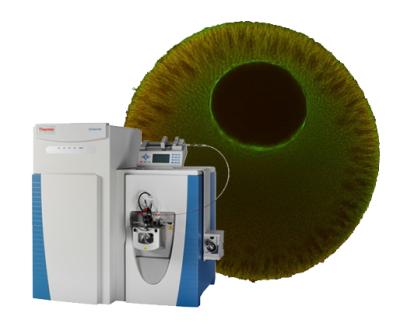Super-resolution mass spectrometry enables rapid, accurate, and highly-multiplexed proteomics at the MS2-level
Publication Year
2022
Type
Journal Article
Abstract
The complementary reporter ion approaches overcome the ratio-compression problem of multiplexed proteomics and enhance the accuracy of protein quantification at the MS2 level. However, resolving the high m/z complementary ions encoded via mass defects in carbon and nitrogen (∼6.32 mDa mass difference in TMT/TMTpro) requires mass resolution and scan speeds above the performance levels offered by even the state-of-the-art Orbitrap™ instruments. Therefore, complement ion quantification (TMTc/TMTproC) is currently limited to only 5 (TMT) or 9 (TMTpro) channels (∼1 Da spaced) versus 11 or 18, respectively, when analyzing the conventional low m/z reporter ions. Here, we first demonstrate the feasibility of the highly-plexed complementary ion quantification in the high m/z range by enabling ultra-high-resolution (UHR) capabilities on a commercial Orbitrap mass spectrometer. The UHR performance required 3 s time-domain transients, which were acquired and processed with the high-performance data acquisition-processing system FTMS Booster X2 externally interfaced with the Orbitrap Fusion™ Lumos™ instrument. Despite validating the TMTc approach for the whole mass range, the UHR capability is incompatible with the practical data acquisition times (scan speeds) for liquid chromatography (LC)-based proteomics. We thus implemented a super-resolution mass spectrometry approach based on the least-squares fitting (LSF) that resolves even the 6.32 mDa doublets for all TMTproC channels in the whole mass range with time-domain transients as short as ∼108 ms (resolution setting of 50 000 at m/z 200). A more demanding, quantitatively accurate TMTproC performance is provided at the resolution setting of 120 000 at m/z 200 (256 ms time-domain transients). This advance enables accurate, LC timescale-compatible, and highly-multiplexed proteomics at the MS2 level.Competing Interest StatementDr. Tsybin, Dr. Nagornov, and Dr. Kozhinov are employees of Spectroswiss, which develops hardware and software tools for mass spectrometry data acquisition and processing.
Journal
bioRxiv
Pages
2022.07.29.501912
Documents

